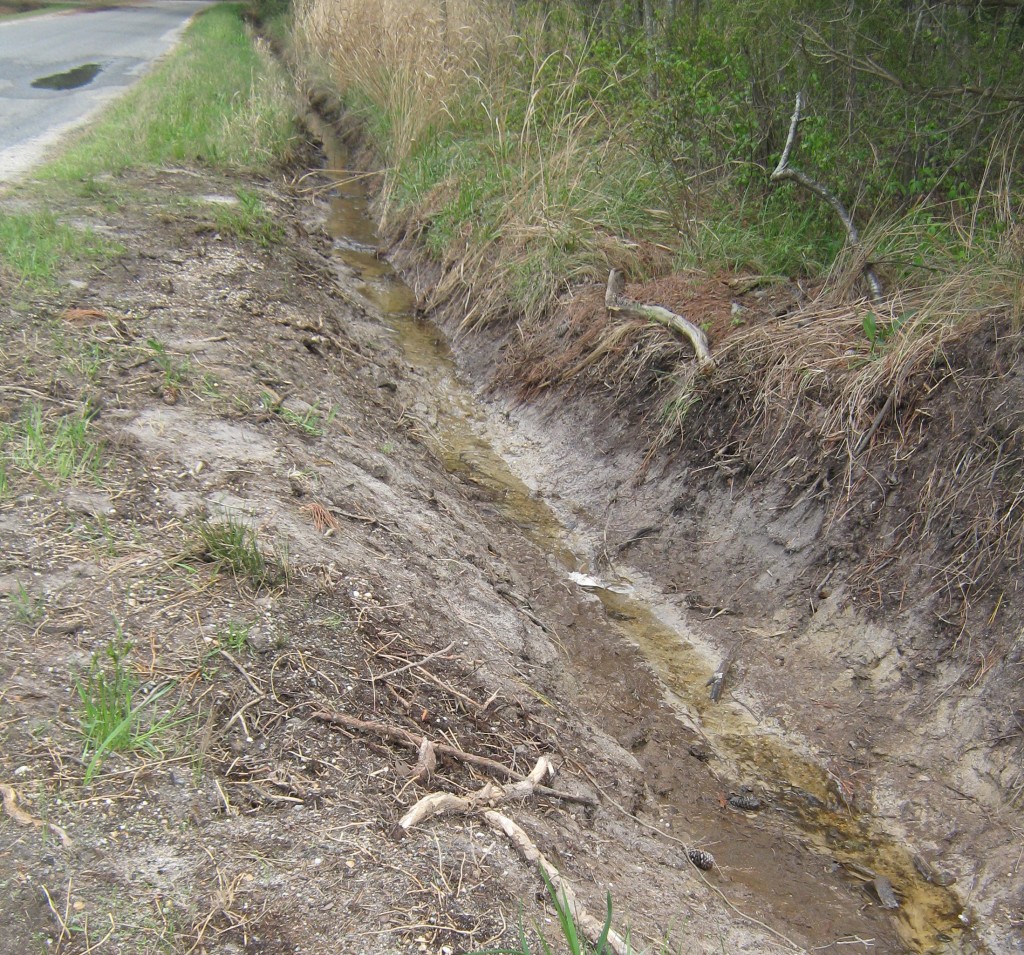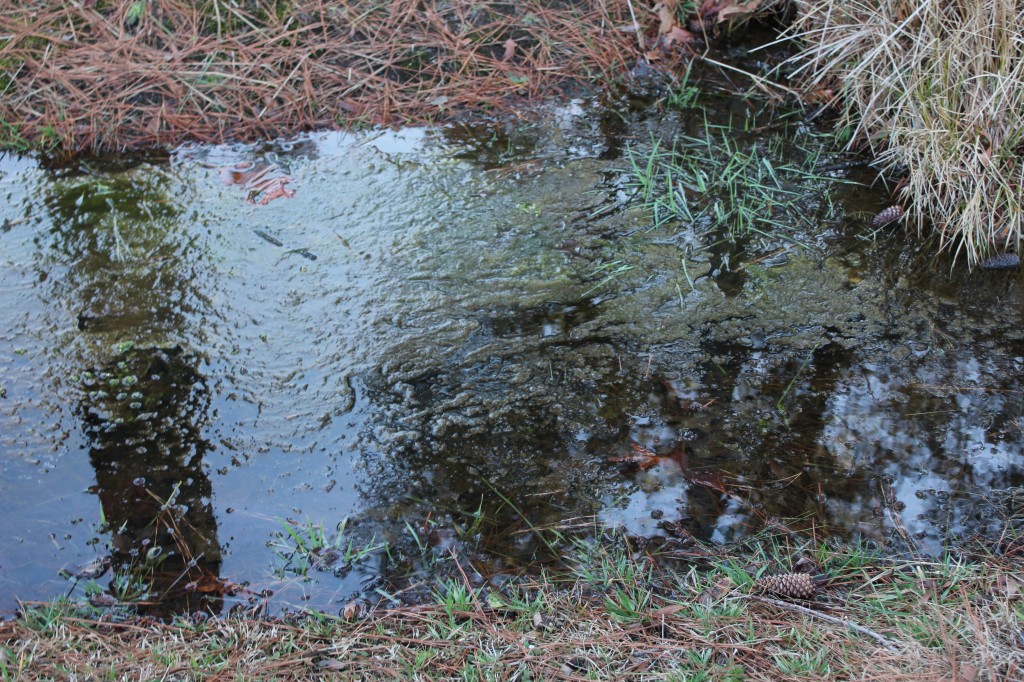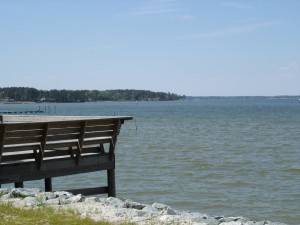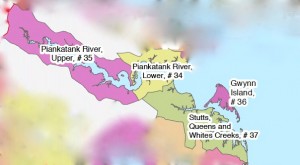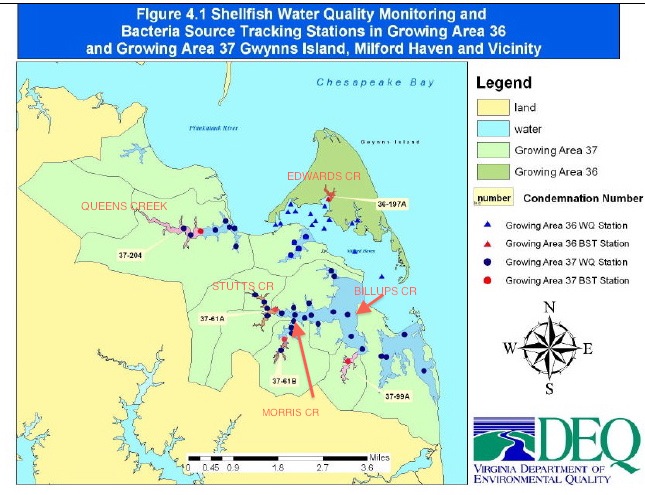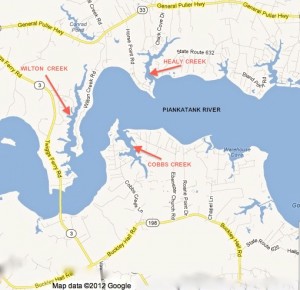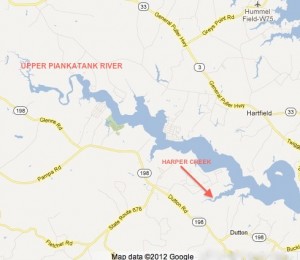Inside the Crater went silent a year ago, but life kept on moving ahead, dragging and pushing me along too. With the time change this morning to move ahead an hour for Daylight Savings Time, I thought this would be a good time to reactivate Inside the Crater.
VDOT finished a part of the Canoe Yard Trail outfall and roadside ditch last year, so the rainfall runs crystal clear to the marsh now.
This is our one shining success story for the Ditches of Mathews County Project, even if it’s incomplete, but we’ll accept it with thanks. It proves what we’ve said all along: if the roadside and outfall ditches are cleaned, have the proper grade and the pipes are open–Mathews has no trouble draining its stormwater, even in Onemo with its low elevation.
The EPA approved our TMDL Implementation Plan to improve the water quality in the Piankatank/Milford Haven/Gwynn’s Island watershed, but the Ditch Maintenance Task Force recommendation still needs to be organized. It’s on my list, after I finish my book, Drowning a County.
Drowning a County traces the history of highway drainage in Mathews County and the institutional myths the Virginia Department of Transportation’s used to explain away their failure to maintain their systems for decades. The book debunks those myths with published mainstream scientific information, translated into normal English.
To do this, I tracked down Army Corps of Engineers hurricane surveys from the 1950’s and 60’s and a 1980 drainage study of the Garden Creek watershed. I learned a lot about Mathews County in reading through 34 years of Board of Supervisors minutes about ditches and VDOT and the revenue-sharing for ditches saga from 1993 to 2008.
Wetlands ecology wasn’t on my reading list, but turned out to be an essential element, aided by the Mathews Memorial Library’s acquisition of an excellent textbook.
GC Morrow taught me how to find overgrown outfall ditches and probe for pipes under the road that could no longer be seen and how to use topo maps to track the streams channelized as outfalls.
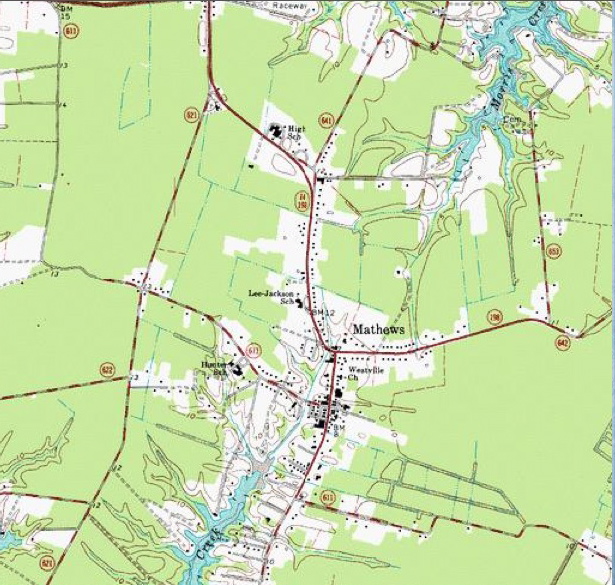
Blue dashed lines were drainage structures and streams in 1965–some of which are now totally obstructed. Image courtesy of USGS from Mathews topo map
Can’t count how many wonderful Mathews residents stopped to see if I needed help while photographing ditches from the roadside. And that is probably the biggest factor in why I kept going on this project: the people of Mathews. They are good people with a long history here. They’ve kept the environment in such good condition that if the ditches could drain to the appropriate creeks and rivers and carry fresh rainwater, nature could solve a lot of the E. coli problem the TMDL plan addresses.
But VDOT mythology turned highway ditches into retention ponds filled with muck and algae and stagnant water.
This spring, VDOT just might realize their mythology has kept the roadbeds saturated and caused more freeze damage to the roads this winter than they ever imagined.
For me, I’ve made it through the winter and over the despair of feeling I’d taken on an impossible task. Spring is on the way, and Drowning a County is on the way to completion too.
Check out Carol’s Ditches of Mathews County columns at http://ChesapeakeStyle.com.


